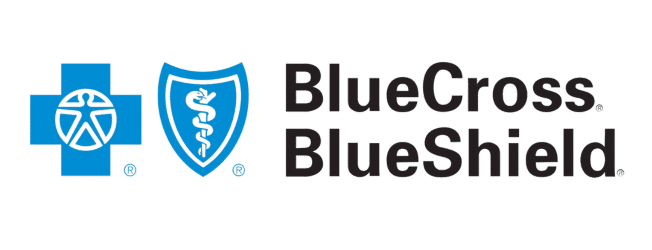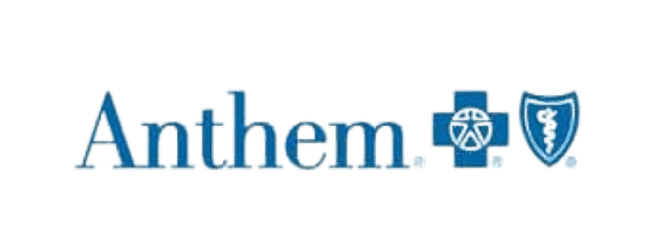Drug safety has become a critical issue in recent years, especially for individuals who may be experimenting with substances for the first time. The risk of consuming drugs that have been laced—meaning they contain unexpected or dangerous additives—has risen sharply, leading to an increase in accidental overdoses and adverse health outcomes. Unless medications are obtained directly from a licensed pharmacy or dispensary, there is always a possibility that the product may not be what it claims to be. Understanding the risks, recognizing the symptoms, and knowing how to protect yourself are essential steps to staying safe in today’s environment.
What Does Getting Laced Mean?
The phrase “getting laced” refers to the act of consuming a drug or substance that has been secretly mixed with other ingredients, often without the user’s knowledge. This can happen for several reasons—dealers may add cheaper or more potent substances to increase their profits or to enhance the effects of the drug. Unfortunately, this practice can have unpredictable and dangerous results, as the user is unaware of what they are actually ingesting. In some cases, drugs are laced intentionally to harm or manipulate the user, but more commonly, it is linked to illegal drug distribution and is associated with an increased risk of addiction, health complications, and even death. Being able to identify the warning signs and understanding the dangers are crucial for anyone who may be exposed to this risk.
Common Substances Used to Lace Drugs
A variety of substances are commonly used to lace drugs, each carrying its own set of risks and potential side effects. Understanding what these substances are and how they interact with the primary drug is vital for harm reduction.
| Substance | Why It’s Used | Risks |
|---|---|---|
| Heroin | Added to amplify addictive properties and lower cost | Severe withdrawal, increased addiction risk, respiratory depression |
| LSD | Used for hallucinogenic effects, sometimes as a prank or to deceive inexperienced users | Hallucinations, psychological distress, unpredictable reactions |
| Fentanyl | Potent opioid added to enhance the high, often without user knowledge | Extremely high overdose risk, fatal respiratory failure |
| PCP | Added to cannabis or other drugs for dissociative effects | Severe behavioral changes, hallucinations, long-term mental health issues |
| Methamphetamine | Used to increase stimulant effects in drugs like cannabis or cocaine | Heart problems, paranoia, addiction |
Drugs That Are Commonly Laced
Certain drugs are more frequently targeted for lacing due to their popularity and street value. The following table highlights some of the most commonly laced drugs and the substances they are often mixed with.
| Drug | Common Additives | Potential Effects |
|---|---|---|
| Cocaine | Aspirin, heroin, strychnine, methamphetamine | Unknown purity, increased toxicity, higher overdose risk |
| Cannabis | PCP, methamphetamine, laundry detergent | Unpredictable mental effects, physical illness, chemical exposure |
| Ecstasy (MDMA) | Caffeine, ketamine, fentanyl, methadone | Heart problems, overheating, overdose, mental confusion |
| Prescription Pills | Fentanyl, synthetic opioids, other prescription drugs | Fatal respiratory depression, addiction, overdose |
Signs and Symptoms of Laced Drug Consumption
Recognizing the symptoms of laced drug consumption can save lives. The effects often appear rapidly and can vary depending on the substances involved. Here are some key indicators to watch for:
- Strange or erratic behavior: Sudden mood swings, confusion, excessive euphoria, or uncharacteristic sluggishness may all indicate laced drug use.
- Hallucinations: Experiencing sights or sounds that are not real is a major red flag, especially if the primary drug is not known for causing hallucinations.
- Physical symptoms: Look for bloodshot eyes, excessive sweating, pale skin, vomiting, foaming at the mouth, and abnormal heart rates.
- Severe reactions: Seizures, difficulty breathing, or unconsciousness require immediate emergency intervention.
If you or someone you know displays these symptoms after consuming a drug, seek medical help immediately.
Dangers and Risks Associated With Laced Drugs
Consuming laced drugs can lead to a cascade of negative outcomes, both in the short and long term. The unpredictability of these substances makes every use a potential risk. Here are some of the most significant dangers:
- Increased risk of addiction: The presence of highly addictive substances like heroin or fentanyl can create dependency even after limited use.
- Impaired judgment and behavior: Unexpected reactions may result in accidents, risky decisions, and conflicts with others.
- Overdose: The biggest risk is fatal overdose, particularly with drugs laced with potent opioids. Many individuals are unaware that their drugs have been altered, which increases the risk of taking a lethal dose.
- Long-term health issues: Chronic use of laced drugs can result in lasting physical and mental health problems, including organ damage, memory loss, and mental disorders.
How to Protect Yourself From Laced Drugs
While the safest option is to avoid using illicit substances altogether, those who choose to use drugs can take several harm-reduction steps to minimize their risk of encountering laced products:
- Purchase only from licensed sources: Always buy medications or recreational substances from reputable pharmacies or legal dispensaries. Street drugs are much more likely to be adulterated.
- Test your drugs: Use drug testing kits, which are widely available online and at some pharmacies, to check for dangerous additives such as fentanyl. These kits can help you identify harmful contaminants before consumption. For more information on drug testing and safety, visit National Institute on Drug Abuse.
- Stay informed about the risks: Educate yourself and others about the signs and symptoms of laced drugs. If you notice a strange taste, smell, or appearance, do not consume the substance.
- Never use drugs alone: If you do choose to use drugs, do so with someone you trust who can call for help in case of an emergency.
What to Do If You Have Taken Laced Drugs
If you or someone you are with experiences symptoms of laced drug consumption, prompt action is crucial. Here’s what you should do:
- Address immediate symptoms: Ensure the person is in a safe environment, provide water, and encourage rest. If symptoms are mild, monitor them closely for any changes.
- Contact healthcare professionals: Call your local poison control center or visit an emergency room to get expert advice. Medical professionals can assess the severity of the reaction and provide appropriate care. The Poison Control Center is an excellent resource for immediate advice.
- Call emergency services: If the person collapses, has difficulty breathing, or is unresponsive, dial emergency services immediately. Follow the operator’s instructions for providing first aid until help arrives.
The Impact of Laced Drugs on Mental and Physical Health
The consequences of consuming laced drugs extend far beyond the initial high or adverse reaction. Many people experience profound and lasting changes to their mental and physical health:
- Mental health issues: Depression, anxiety, paranoia, and even post-traumatic stress disorder can develop after a negative drug experience, particularly if the person was unaware of what they consumed. These mental health challenges may persist and require professional treatment. For more information on mental health and substance use, visit the Substance Abuse and Mental Health Services Administration (SAMHSA).
- Chronic physical symptoms: Persistent headaches, insomnia, chest pain, muscle weakness, and appetite changes are all possible. In severe cases, damage to organs such as the heart, liver, or kidneys may occur, leading to lifelong complications.
- Social and professional consequences: Drug-related issues can lead to difficulties at work or school, strained relationships, and legal trouble.
Raising Awareness About Laced Drugs
It is essential to spread awareness about the dangers of laced drugs, not only among those who use drugs but also within communities, families, and educational institutions. Open conversations can help reduce stigma, encourage safer choices, and empower individuals to seek help if needed. If you suspect someone you know is at risk, offer support and connect them with appropriate resources. Participating in community outreach and educational programs can also make a significant difference in preventing drug-related harm.
Get Help From Tennessee Behavioral Health
Understanding what it means to get laced and the dangers associated with laced drugs is critical in today’s world. The practice of adding foreign substances to drugs is a major contributor to the current overdose crisis and can have devastating, life-altering consequences. However, by staying informed, taking proactive safety measures, and reaching out for help when needed, you can protect yourself and others from these hidden dangers. Remember, drug safety is a shared responsibility, and education is the first step toward prevention and recovery.
If you or someone you care about has been affected by laced drugs or is struggling with substance use, Tennessee Behavioral Health offers professional treatment, support, and resources. Their experienced team can help you navigate the challenges of addiction and recovery in a safe, confidential environment. Don’t wait—reach out today to take the first step toward a healthier, safer future.
Frequently Asked Questions
What does it mean for a drug to be laced?
A drug is considered laced when it contains substances or chemicals that were not originally intended to be there. This is often done to increase the drug’s effects, reduce costs for dealers, or create a more addictive product. Laced drugs can be extremely dangerous because users are unaware of the added ingredients, making the effects unpredictable and potentially life-threatening.
Is getting laced dangerous?
Yes, consuming laced drugs is highly dangerous. The presence of unknown or potent additives can significantly increase the risk of overdose, addiction, and severe health complications. Laced drugs are a leading cause of accidental overdoses and can result in both immediate and long-term harm. It is important to seek medical attention immediately if you suspect you or someone else has consumed laced substances.
What are the symptoms of getting laced?
Symptoms of having consumed laced drugs can include erratic behavior, hallucinations, confusion, severe nausea, vomiting, high or low body temperature, rapid or irregular heartbeat, excessive sweating, and loss of consciousness. The severity and type of symptoms depend on the substances involved. Recognizing these signs early can be life-saving.
What should I do if I have taken laced drugs?
If you believe you have taken laced drugs, it is critical to act quickly. Move to a safe environment, drink water if you are able, and seek medical help immediately. Contact poison control or go to the nearest emergency room for assessment. If someone loses consciousness, has difficulty breathing, or exhibits severe symptoms, call emergency services right away.
How can I avoid laced drugs?
To reduce the risk of consuming laced drugs, only obtain substances from licensed, reputable sources such as pharmacies or legal dispensaries. Use drug testing kits to check for contaminants, and never use drugs alone. Stay informed about local drug trends and talk openly with friends and family about the risks. If you are concerned about your substance use, consider reaching out to professional treatment services for guidance and support.













